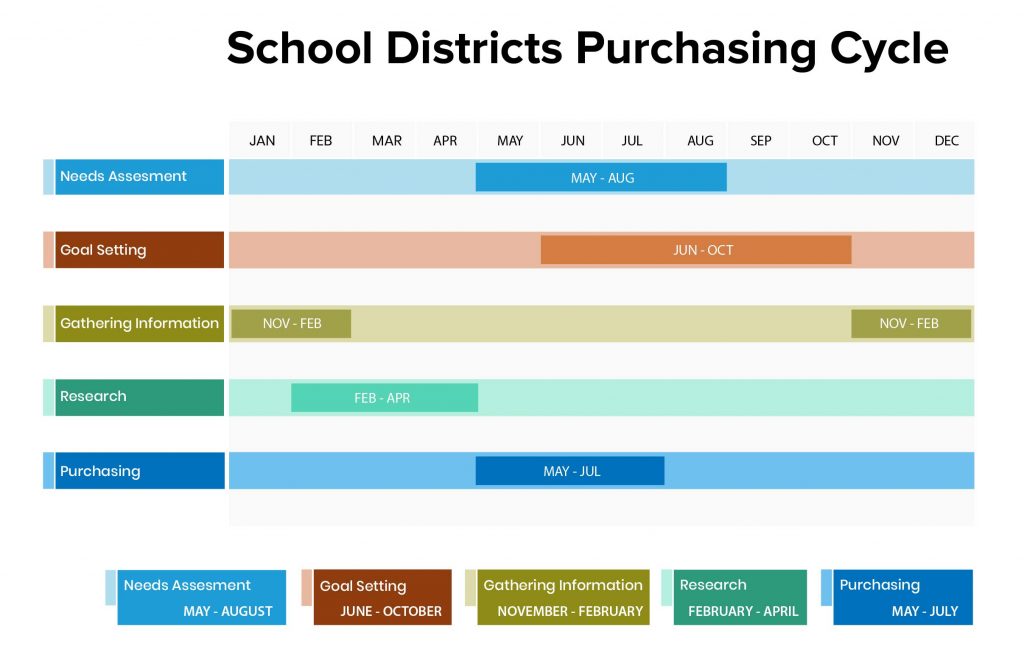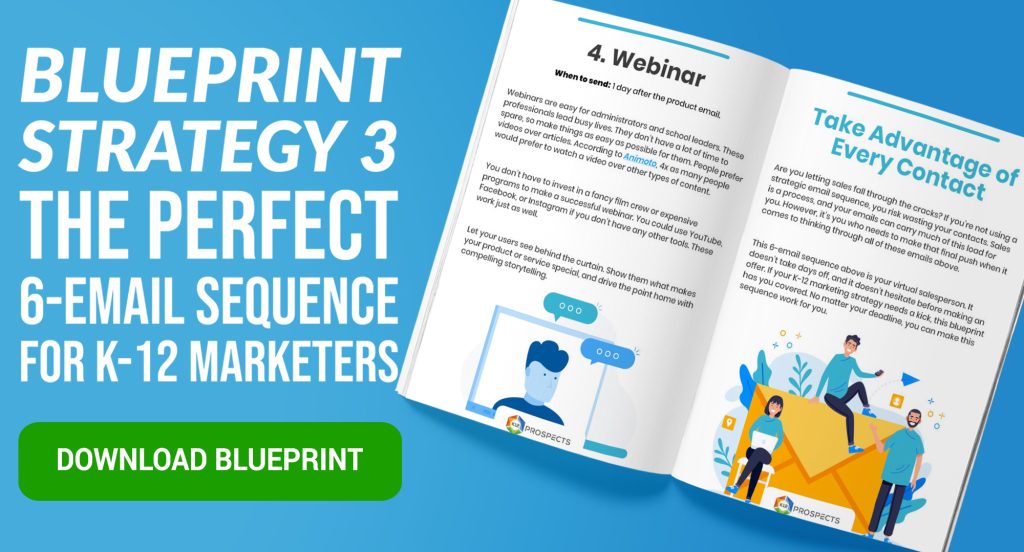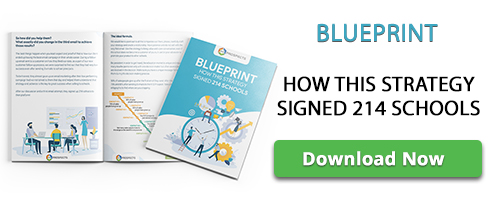School Districts Purchasing Cycle – Timing is Everything

School Districts Purchasing Cycle
Though the budget crisis for school districts frequently makes the headlines, nationally each district spends about $12,000.00 per student annually. Knowing money is always an issue, if you want to be the vendor who secures the contract, it is imperative you understand the purchasing schedule of the district or districts to which you are marketing your products. Schools are organized chaos because their clients are so varied, but within the chaos, an organizational infrastructure keeps them moving along. Knowing this organizational infrastructure for purchasing will be your best marketing tool.
First it is important to remember that no school wants to hear from you at the beginning of the school year or at the end of the school year. Budgets have been spent by July so schools are ready in September. Knowing this, the next important marketing tool you need is to understand the purchasing cycle of the district you want to procure as a client. In general purchasing cycles have five parts: assessing needs, setting goals, gathering information, doing research and purchasing decisions.
Needs assessment: May – August
Beginning in May and continuing over the summer, administrators start looking at the year, assessing how it went. Each school district is an entity unto itself with its own unique needs, so assessments of what works and what doesn’t work are particular to each district as well as each school within that district. One program may be working wonderfully for the high school but the same program in the middle school may need to be reevaluated. In this step data is gathered and analyzed, and it is this analysis that provides the platform for setting goals for the following school year. The needs assessment covers staff, programs, materials, technology, etc.
Goal setting: June – October
Goal setting starts in the beginning of the summer and continues through early fall. It is the result of the needs assessment. Since schools are involved in data driven decision-making, the end result of a datum analysis is a goal or goals. Usually a committee made up administrators, staff, parents and community members meets over the summer to analyze the data gathered and decide what will drive the school district to success during the next school year.
Gathering information: Nov – Feb
Once the needs assessment and goal setting phases are complete, information has to be gathered. Just getting the information on vendors who are credible can take weeks. Competition is fierce and many companies have wonderful options. It is getting this information together, having weeded out those that do meet school standards that takes time. The process begins in late October or early November.
Research: Feb – Apr
Once the information is gathered, then researching begins on each company, its strengths and weaknesses, its options, materials, etc. During this time, school districts will take an in depth look at the vendors and why one is better than another. This process continues through March or April.
Purchasing: May – July
After all the steps of the purchasing cycle are completed, it is time to decide which materials, programs, technology, etc. to buy. Purchasing usually takes place in the summer, so it is ready for use at the beginning of the school year.

Vendors What to do when Summer
Introductions need to be made before the purchasing cycle begins. Since school districts work on relationships and most are long term, going with the familiar that can be trusted, you will want to lead with your strengths and get to know the purchasing agent in the district. You will be working for the next school year purchases, so be sure you know what is being purchased for the current year. Do your homework and go prepared to meet district officials. Call to make a summer appointment. Offer to be a resource. Get in touch with the school board and come to a meeting. Be a presenter at a Parent/Teacher Organization meeting. Get your face our there and become known.
Fall, excluding the first two weeks of school
Schools will be assessing needs and setting goals and you need to know what is going on. Administrators will have an idea of staffing, materials and initiatives for the next year based on the comparison of baseline data to the current school year data. Know what materials are not working, what initiative falls short or what technology is needed. Every school district has a website. Visit it and be sure you know successes and where things need to improve. Make an appointment to see the purchasing administrator. Meet building principals.
November to April
During the information gathering and research stages, you will want to be very visual. Offer yourself as a support, offer tools that might help, provide answers to questions, and build your rapport. You have to build trust.
April through the end of school
Building principals will send in their preliminary budgets and their needs to the district in late April or early May. You want to be one step ahead, with principals supporting your product because you have spent the school year building relationships and trust. You have met teachers, talked with parents, school board members and community members. You have demonstrated your product, shown its competitive edge and led with your strengths.
July through August
Teachers will become familiar with the products. They will ask questions about the products and you will need to be available to answer those questions. Though administrators buy the materials, the teachers use them and you need to meet their needs and work with them.
Summary
The purchasing cycle is not set in stone, but it is a guide for the vendor to follow. Stages overlap, materials need to be purchased during the year, and supplements to materials may be needed. Regardless, as a successful vendor, you need to know the schedule, know when to introduce yourself, when to sell your products, when to be a resource and when to be a friend. As the old saying goes, timing is everything!



